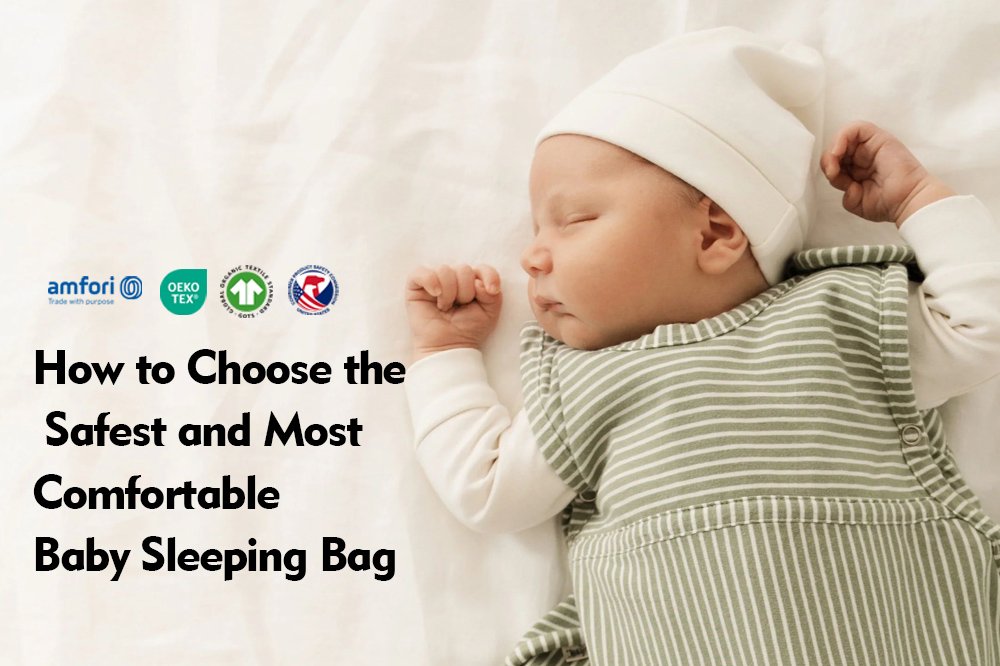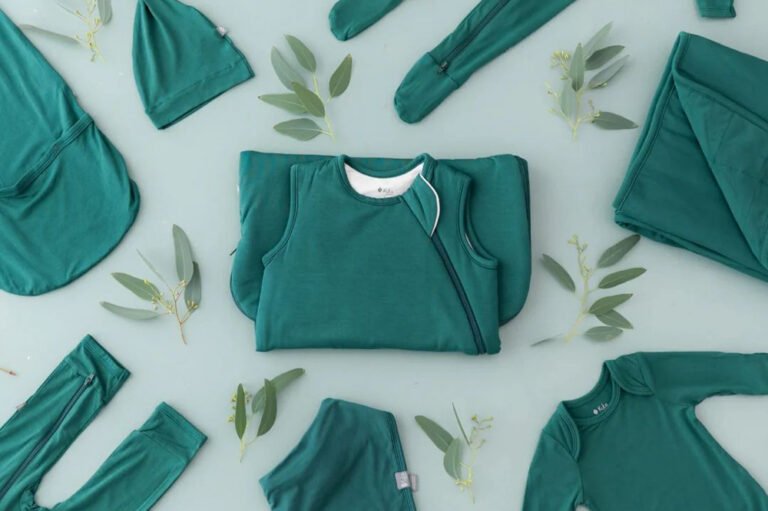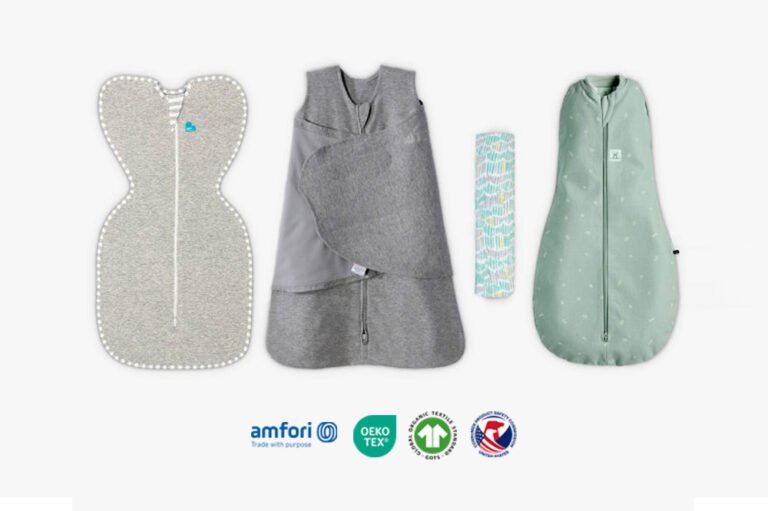
Choosing the safest and most comfortable baby sleeping bag is one of the most important decisions for parents. Not only does it ensure your baby sleeps soundly, but it also guarantees their safety.
With various materials, designs, and features available in the market, it can be challenging to determine which baby sleeping bag is best suited for your little one. In this guide, we’ll delve into the most important aspects to consider and offer expert insights into making an informed decision.
Why Use a Baby Sleeping Bag?
Before discussing the specifics of choosing the right sleeping bag, it's essential to understand why baby sleeping bags have become a preferred option for parents worldwide. Unlike loose blankets that can pose risks like suffocation or overheating, baby sleeping bags ensure that your child remains comfortably covered throughout the night. These bags reduce the likelihood of babies accidentally covering their faces while ensuring they stay warm.
Material: The Foundation of Comfort and Safety
Bamboo Fiber and Organic Cotton: Why They’re the Best Choices
When selecting a baby sleeping bag, the material is the most crucial factor. Bamboo fiber and organic cotton are among the safest, most comfortable, and environmentally friendly materials available. Both materials are natural, hypoallergenic, and breathable, ensuring your baby’s skin remains irritation-free.
Bamboo fiber is praised for its moisture-wicking properties, meaning it keeps babies dry even during warm nights, preventing discomfort and skin rashes. Moreover, bamboo fiber is naturally antibacterial, offering an extra layer of protection.
Organic cotton, on the other hand, is soft, breathable, and free from harmful chemicals or pesticides, making it ideal for sensitive baby skin. Organic cotton provides excellent insulation without overheating, making it perfect for year-round use. According to Dr. Emily Hayes, a pediatrician specializing in infant care, "Choosing natural materials like bamboo fiber and organic cotton ensures that the baby’s delicate skin is protected from irritants, allergens, and harsh chemicals often found in synthetic materials."
Avoid Synthetic Fabrics
While synthetic fabrics like polyester are often marketed as durable, they can trap heat, leading to overheating, which is a risk factor for Sudden Infant Death Syndrome (SIDS). Always choose natural, breathable materials when selecting a sleeping bag.
Size Matters: Ensuring Proper Fit for Safety
Choosing the right size of a baby sleeping bag is critical for your baby’s safety. A sleeping bag that’s too large may cause your baby to slip inside, while one that’s too tight can restrict movement and cause discomfort. Most manufacturers provide size guides based on a baby's age, weight, and length.
The best rule of thumb is to measure your baby’s current size and compare it with the sleeping bag’s specifications. For instance, a newborn should ideally use a 0-6 month size, while a bigger baby may require a larger size. Ensure there’s enough room at the bottom of the bag for your baby to move their legs freely but not so much room that it becomes hazardous.
Avoid Adjustable or Multi-Size Sleeping Bags
Many parents are tempted to purchase adjustable sleeping bags in hopes of using them for a longer period. However, adjustable designs can pose risks. According to childcare expert Sarah Collins, "Sleeping bags that try to accommodate a range of sizes often compromise on fit. A well-fitted sleeping bag is essential for preventing accidents such as entanglement or slipping inside the bag."
Tog Rating: Choosing the Right Insulation
The tog rating measures the warmth of the sleeping bag, helping you determine which bag is suitable for different room temperatures. A higher tog rating offers more insulation, while a lower tog rating is ideal for warmer environments.
Common Tog Ratings and Their Uses:
0.5 tog – Best for hot weather or room temperatures above 24°C (75°F).
1.0 tog – Suitable for mild weather and room temperatures between 21°C and 23°C (69°F to 74°F).
2.5 tog – Ideal for colder nights and room temperatures between 16°C and 20°C (61°F to 68°F).
3.5 tog – Perfect for very cold environments where room temperatures drop below 16°C (60°F).
It’s essential to choose a sleeping bag with the appropriate tog rating for your home’s climate or the season. Overheating is a serious concern for babies, so avoid using a high tog rating in a warm room.
Zippers, Snaps, and Seams: Important Safety Features
The design of the sleeping bag’s fasteners is just as important as the material. When choosing a baby sleeping bag, look for zippers with protective flaps that cover the zipper, preventing it from coming into direct contact with your baby’s skin. Snaps at the shoulders make it easier to put the bag on and remove it without disturbing your baby’s sleep.
Inspect Seams and Stitching
Ensure that the seams are reinforced and smooth, without any loose threads or rough edges that could irritate your baby’s skin. Sturdy construction ensures that the sleeping bag can withstand washing and daily use while maintaining its shape and functionality.
Breathability and Temperature Regulation
One of the key factors to consider when choosing a baby sleeping bag is how well it regulates temperature. A sleeping bag that is too warm can lead to overheating, while one that is too cool may cause discomfort. The best sleeping bags allow for proper air circulation while keeping the baby warm.
Why Breathability Matters
Babies are especially sensitive to temperature fluctuations. Breathable fabrics like bamboo fiber and organic cotton allow air to pass through, preventing the baby from getting too hot. Overheating is linked to SIDS, which makes choosing a breathable sleeping bag all the more important.
According to neonatal expert Dr. Jenna Harper, "Parents should prioritize breathability and natural fabrics when selecting a baby sleeping bag. These materials provide optimal temperature regulation, preventing the baby from sweating or becoming too cold."
Organic Certifications and Safety Standards
When purchasing a baby sleeping bag, always check for certifications that ensure the product is made according to organic and safety standards. Look for labels like GOTS (Global Organic Textile Standard) or OEKO-TEX® certification, which guarantee that the fabric is free from harmful substances and made in an environmentally and socially responsible manner.
These certifications give you peace of mind, knowing that your baby’s sleeping bag is safe, ethical, and sustainable.
Ease of Care and Durability
Baby sleeping bags need to be washed frequently, so choose materials and designs that are easy to clean. Bamboo fiber and organic cotton are machine washable and retain their softness after repeated washing. Ensure that the bag’s zippers and snaps are durable and designed to withstand frequent use.
Conclusion: Making the Right Choice for Your Baby
Choosing the right baby sleeping bag involves considering the material, size, tog rating, and design. Bamboo fiber and organic cotton stand out as the best options due to their breathability, softness, and sustainability. Ensuring a proper fit, selecting the correct tog rating, and prioritizing safety features such as zippers and seams will ensure your baby sleeps comfortably and safely.
By choosing a safe and comfortable sleeping bag made from organic and eco-friendly materials, you’re not only prioritizing your baby’s well-being but also contributing to a sustainable future.






